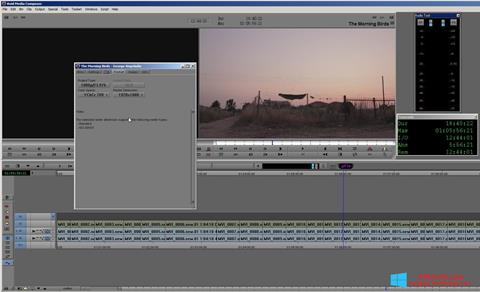

I can’t stress how important this is for those who do this day-in, day-out. And you can take it with you onto any Media composer system. Media Composer’s highly customizable User Profiles feature lets you set up your bench the way you need it. Like playing a musical instrument, pros get their best performances when wailing on their own axes. Thus, the DP, the Director, the Producer, the Talent can all see the shot in the finished look of the film right there, without having to commit to anything.Įditors develop their own style of cutting. This lets them capture full-range (but flat looking) files, yet see what proper profile color grading will do to them in post. if you have enough hardware horsepower, Media Composer will cut it.ĭirectors of Photography are staring to work with Look Up Tables (LUTs) right there on-set. Even with ProRes compression, your NLE is fielding a stream of over 125MB/sec. A RED 4K cranking at 59.94p will spit uncompressed video at more than 700MB per second. Newer cameras with huge sensors and high frame-rates make fat files. You can either work with these super-heavy media directly on the timeline, or cut using proxy-files and only call the native camera files on export. The v.8.3.1 release of Media Composer will support you. Not to mention the product shot for the agency producer to whom no brand mark is ever big enough…īut let's say you want to stay in 4K or UHD all the way. If an actor threw down an inspired (but very subtle) expression, you can get the close-up needed to sell it. It saves you save time in the shoot and preserves your creative options because you can do your critical framing in post.
#Avid media composer 8 requirements 1080p#
One great reason to work with 2K or 4K sources is Media Composer’s ability to re-frame (crop) radically in the edit, while still maintaining full 1080p HD resolution. Mixing resolutions puts a tax on your hardware usually not a big deal, but it can get seriously squishy if you’re on an older CPU. If you can set your project up to ingest a single format, Avid will fly like the industrial strength power plant you have a right to expect.
#Avid media composer 8 requirements code#
It reminds me of the old school days of batch-process code compiling, but now with terabytes of 4K, 3D and HDR.īut the speed and crashworthiness of your workflow is still inversely proportional to the amount of transcoding needed. All of this “AMA-ing” (yes, it’s now a verb) can speed your workflow, as long as the needed media drives are connected during your final Export.Īvid now also lets you transcode in the deep background, meaning you can set a list of mixed-media clips to wash, dry and fold themselves any time the CPU is active, even if you quit Media Composer entirely. You can color-code such clips, so a glance at your timeline will tell you what’s native in the session and what is linked.


Holding down modifier keys (Alt on Windows/Option on Mac) instead conjures an AMA link, essentially creating an Alias in your bin and accessing the media without importing. You can drag and drop media files into a bin-which initiates an Import, transcoding and cloning as needed. In Media Composer 8, AMA percolates mixed resolutions much more smoothly. But AMA’s implementation wandered down bit of a bumpy road. Avid began to address this with Media Composer 7’s Avid Media Access (AMA) protocol. Avid’s competitors were quicker to let you work directly with native media formats.


 0 kommentar(er)
0 kommentar(er)
